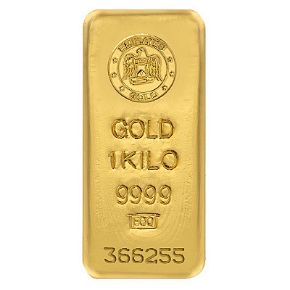
In recent years, the cryptocurrency market has been a playground for high-net-worth individuals and institutions, often referred to as "crypto whales." These players, holding vast amounts of Bitcoin, Ethereum, and other digital assets, have historically driven market trends. However, a subtle but significant shift is underway: many crypto whales are quietly accumulating physical gold. This move reflects a broader institutional trend toward diversification and risk mitigation. This article explores the reasons behind this shift, the mechanics of their strategy, and what it means for the broader investment landscape.
The Appeal of Physical Gold for Crypto Whales
Crypto whales, whether individuals or institutional investors, have amassed significant wealth in volatile digital assets. While cryptocurrencies offer high returns, their price swings—sometimes exceeding 10% in a single day—create substantial risks. Physical gold, with its centuries-long reputation as a store of value, offers a compelling counterbalance. Several factors drive this attraction:
1. Hedge Against Volatility
Cryptocurrencies are notorious for their price volatility. For instance, Bitcoin dropped 20% in a single week in early 2023 before recovering. Gold, while not immune to fluctuations, typically moves within a narrower range (1–2% daily). Whales are using gold to stabilize their portfolios, preserving wealth during crypto market downturns.
2. Inflation and Economic Uncertainty
With global inflation rates hovering between 3–8% in recent years and geopolitical tensions rising, gold’s role as an inflation hedge and safe-haven asset is increasingly attractive. Unlike fiat currencies, which can be devalued by central bank policies, gold’s intrinsic value remains relatively stable. Whales are converting portions of their crypto holdings to gold to protect against currency devaluation and economic instability.
3. Regulatory Risks in Crypto
The crypto market faces growing regulatory scrutiny worldwide. From the SEC’s crackdowns in the U.S. to China’s ongoing restrictions, whales face risks of frozen assets, tax liabilities, or forced liquidations. Physical gold, being a tangible asset, is less susceptible to regulatory overreach, especially when stored in jurisdictions with favorable laws, such as Switzerland or Singapore.
4. Portfolio Diversification
Institutional investors, including hedge funds and family offices, are increasingly treating cryptocurrency as a speculative asset class. By allocating a portion of their wealth to gold, whales reduce their exposure to crypto-specific risks while maintaining a balanced portfolio. Gold’s low correlation with crypto (often below 0.3) makes it an ideal diversification tool.
How Crypto Whales Are Accumulating Gold
The process of converting crypto to physical gold is discreet but systematic, reflecting the strategic nature of institutional investors.
1. Crypto-to-Fiat Conversion
Whales typically start by liquidating portions of their crypto holdings on major exchanges like Binance, Kraken, or Coinbase Pro. To minimize market impact, they use over-the-counter (OTC) desks, which facilitate large trades without moving public market prices. For example, a whale selling $10 million in Bitcoin might incur 0.1–0.2% in fees ($10,000–$20,000) but avoid slippage losses that could exceed 1–2%.
2. Purchasing Physical Gold
Once converted to fiat, whales purchase gold bars or coins through reputable dealers like JM Bullion, Kitco, or directly from refineries like PAMP Suisse. They often opt for allocated storage, where specific bars are assigned to them, ensuring ownership clarity. Premiums over the spot price (3–8%) and shipping costs ($50–$500) are factored into the acquisition cost.
3. Secure Storage Solutions
To protect their gold, whales favor professional vault storage in secure jurisdictions. Facilities like Brinks or Loomis offer high-security vaults with annual fees of 0.5–1.5% of the gold’s value. For a $10 million gold holding, this translates to $50,000–$150,000 per year. Some whales also diversify storage across multiple locations to mitigate geopolitical risks.
4. Discreet Operations
To avoid drawing attention, whales often work through intermediaries, such as wealth managers or specialized firms, to handle conversions and storage. Non-disclosure agreements and offshore accounts further shield their activities from public scrutiny, maintaining privacy in a transparent crypto market.
Evidence of the Shift
While crypto whales operate discreetly, several indicators suggest this trend is gaining momentum:
Gold ETF Inflows: Institutional-grade gold exchange-traded funds (ETFs), such as SPDR Gold Shares (GLD), have seen inflows of over $5 billion in 2024, partially attributed to crypto-linked investors diversifying into gold-backed assets.
Dealer Reports: Major gold dealers report a rise in high-value purchases (over $1 million) from clients with crypto backgrounds, particularly in 2023–2025.
On-Chain Data: Blockchain analytics show large Bitcoin and Ethereum transfers to exchange wallets, followed by withdrawals to fiat accounts, correlating with increased gold purchases in key markets like Dubai and Zurich.
Industry Commentary: Hedge fund managers, such as Paul Tudor Jones, have publicly advocated for gold as a hedge against crypto volatility, signaling institutional interest.
Why the Shift Is Quiet
Crypto whales are keeping their gold accumulation under wraps for several reasons:
Market Sensitivity: Publicly liquidating large crypto holdings could trigger price drops, harming their remaining positions. By using OTC desks and phased conversions, whales minimize market disruption.
Privacy Concerns: High-profile investors face risks of hacking or physical theft if their gold holdings are publicized. Discreet storage and anonymous purchases mitigate these risks.
Strategic Advantage: By accumulating gold quietly, whales avoid driving up gold prices prematurely, securing better entry points.
Implications for the Investment Landscape
The shift toward physical gold by crypto whales has broader implications:
1. Crypto Market Dynamics
Large-scale liquidations by whales could increase selling pressure on cryptocurrencies, particularly during bear markets. However, phased conversions and OTC trades mitigate this impact, suggesting a gradual rather than disruptive effect.
2. Gold Market Demand
Increased institutional demand for physical gold could push prices higher, especially if whale activity accelerates. In 2025, gold prices have already risen 15% year-to-date, partially driven by institutional buying.
3. Hybrid Investment Strategies
The trend signals a maturing crypto market, where investors blend digital and traditional assets. This hybrid approach may inspire retail investors to follow suit, diversifying into gold or gold-backed ETFs.
4. Regulatory Attention
As whales move wealth into gold, regulators may scrutinize cross-asset conversions for tax compliance or anti-money-laundering purposes. Investors must navigate reporting requirements, such as capital gains taxes on crypto sales (e.g., 20–37% in the U.S.).
Challenges and Risks
While the shift to gold offers benefits, it’s not without challenges:
Liquidity Trade-Off: Gold is less liquid than crypto, with selling processes involving delays and additional costs (e.g., dealer buyback spreads of 2–5%).
Storage Costs: Annual vault fees and insurance (0.5–2% of gold’s value) erode returns over time.
Opportunity Costs: By converting to gold, whales forgo potential crypto gains. For example, Bitcoin’s 30% rally in Q1 2025 outpaced gold’s 5% gain in the same period.
Counterparty Risk: Reliance on dealers, vaults, or intermediaries introduces risks of fraud or insolvency, though reputable providers mitigate this.
Example: A Whale’s Strategy
Consider a whale converting $10 million in Bitcoin to gold:
Conversion: Sells Bitcoin via an OTC desk, incurring 0.15% fees ($15,000).
Gold Purchase: Buys 4,000 ounces of gold at $2,500/ounce (spot) + 5% premium ($125/ounce), totaling $10.5 million. Shipping and insurance add $1,000.
Storage: Stores in a Swiss vault at 1% annual fee ($100,000/year).
Total First-Year Cost: $15,000 (fees) + $500,000 (premium) + $1,000 (shipping/insurance) + $100,000 (storage) = $616,000 (6.16% of the initial investment).
This whale sacrifices liquidity and potential crypto gains but gains stability and a hedge against economic risks.
The quiet accumulation of physical gold by crypto whales reflects a strategic pivot toward stability, diversification, and protection against economic and regulatory uncertainties. By carefully converting crypto to gold, securing professional storage, and managing costs, these institutional players are reshaping their portfolios for long-term resilience. This trend underscores the evolving interplay between digital and traditional assets, signaling a new phase in the maturation of the crypto market. Investors considering a similar move should weigh the costs, risks, and benefits, consulting financial advisors to align their strategy with their goals.
NOTE
This Content is the copyrighted content of EE.GOLD. All rights are reserved. You are welcome to share or use our content only by including direct links to our website. Any other form of reproduction, distribution, or use without proper attribution is strictly prohibited.
This Content is intended solely for educational purposes. The information provided does not constitute financial or investment advice.
Please note that Digital Storage Receipt, Secure Storage Solutions, and Physical Gold Sales are the only services offered by EE.GOLD.
We strictly adhere to government regulations and are firmly against all illegal financial or investment activities globally.
For further inquiries, feel free to contact us through our official channels.










.png)

